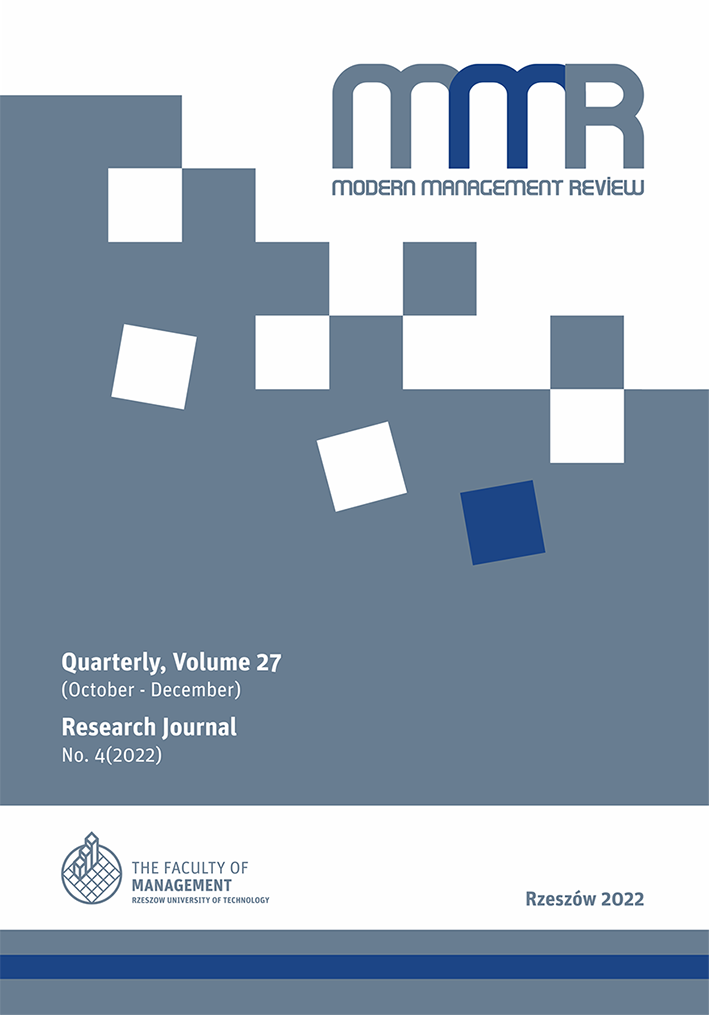Abstract
An important feature that characterizes modern armed conflicts is the large-scale use of aviation. Combat activities of the air force became an integral part of fights, battles and operations conducted in various conditions and in many cases determined their development and final result. Currently, in the center of the media discourse, including political and military, there are e.g., issues regarding the use of Unmanned Aerial Systems (UAV) during an armed conflict. The use of military UAVs in operations in Iraq, Libya and Ukraine confirmed their high usefulness in operations (conflicts) of various intensity. Drawing on practical examples, the article discusses key problems related to the use and integration of UAV. This can be a starting point for a discussion on the challenges associated with their use.
The study used the document research method as well as quantitative and qualitative analysis. A review of the scientific literature on the complex problem of the use of UAVs in the conditions of armed conflict was made. Publicly available information provided by interested institutions was used.
References
AAP-6 (2013). NATO Glossary of Terms and Definitions containing NATO military terms and their definitions. NATO Standards Agency. Brussels.
ATP-3.3.7 (2014). Guidance for the Training of Unmanned Aircraft Systems (UAS) Operators. NATO Standardization Agency. Brussels.
ATP-3.3.7.1 (2014). UAS Tactical Pocket Guide, Edition A Version 1. NATO Standardization Agency. Brussels April.
Chamola, V., Agarwal, A., Gupta, N. (2021). A Comprehensive Review of Unmanned Aerial Vehicle Attacks and Neutralization Techniques. “Ad Hoc Networks”, Vol. 111, 1 February.
Cieślak, E., Zieliński, T. (2017). Obszary problemowe związane z przyszłą integracją bezzałogowych systemów powietrznych w działaniach Sił Zbrojnych RP [w:] Rosłan, G., red., Integracja powietrzno-lądowa w Siłach Zbrojnych RP. Dęblin: Wyższa Szkoła Oficerska Sił Powietrznych.
Ko, Y.D., Song B.D. (2021). Application of UAVs for tourism security and safety. “Asia Pacific Journal of Marketing and Logistics”, Vol. 33 No. 8. https://doi.org/10.1108/APJML-07-2020-0476.
Witczak A., Kawalec A., Klembowski W. (2013). Załogowe i bezzałogowe systemy lotniczego rozpoznania elektronicznego – rola i koncepcje użycia. „Biuletyn WAT”, Vol. LXII, nr 2.
All texts published in the Journal "Modern Management Review" are available in the full version on the website of MMR. Digital IDs have also been entered from number 19 (3/2012) (DOI: 10.7862/rz.2018.mmr.1)
Open Access – CC BY 4.0
This is an open access journal which means that all content is freely available without charge to the user or his/her institution. The articles are published under the terms of the Creative Commons licence (CC-BY 4.0), including the following fields of exploitation comprising:
1) the right to publish the Work in print in book and digital form and to distribute it in book and digital form, including by displaying, playing, broadcasting, making it publicly available by the Publisher and third parties,
2) the right to record and reproduce all or part of the Work on paper and in the form of a digital record and in any other possible way by the Publisher,
3) the right to enter the Work into computer memory and save the Work in the IT systems of the Publisher and other entities distributing digital content,
4) the right to archive the Work and make copies of the Work on electronic media by the Publisher, without quantitative restrictions,
5) the right to digitise the Work and to perform conversions/transformations of the Work in electronic form into other digital formats by the Publisher and third parties,
6) the right to distribute the Work, including via the Internet or other ICT networks by the Publisher and other third parties, in a way that allows viewing, reading, copying the content of the Work in electronic form, i.e. all elements belonging to it, whereby copying shall be understood as the saving of the Work made available to an interested person on a medium of their choice,
7) the right to store the Work in the database of the Publisher and other entities distributing the Work in any form, as well as its processing in the database of the Publisher and third parties,
8) right to translate and publish the Work in one of the modern languages in any form by the Publisher and third parties.


